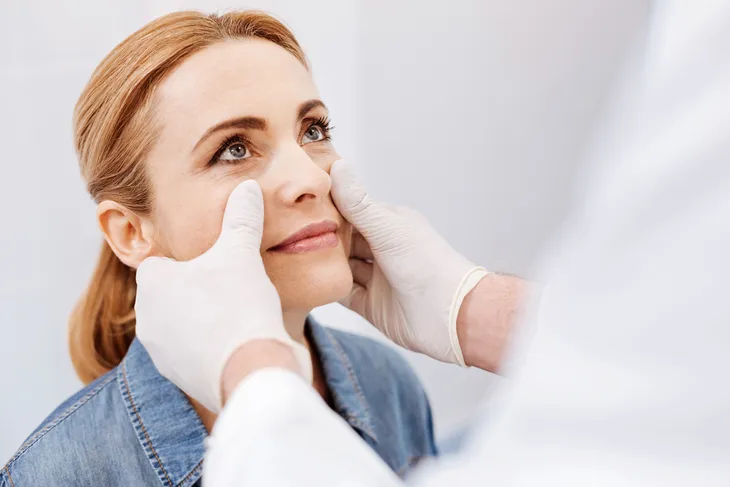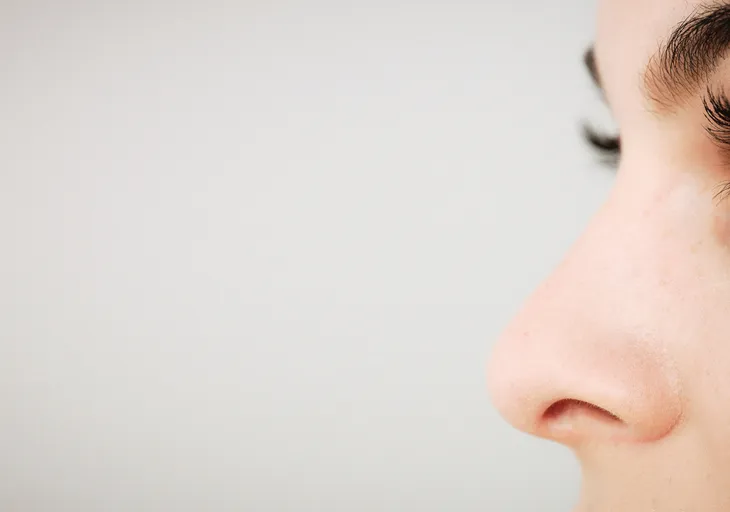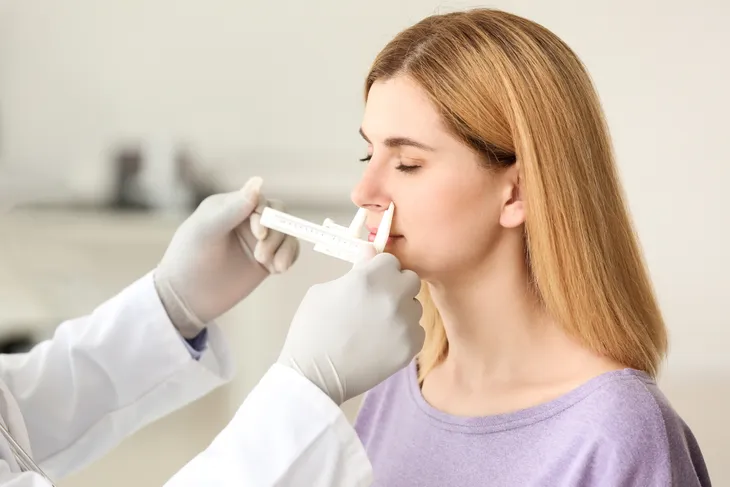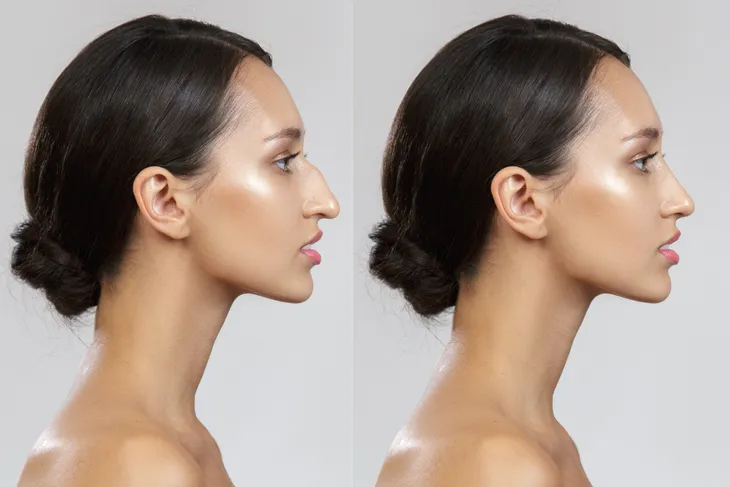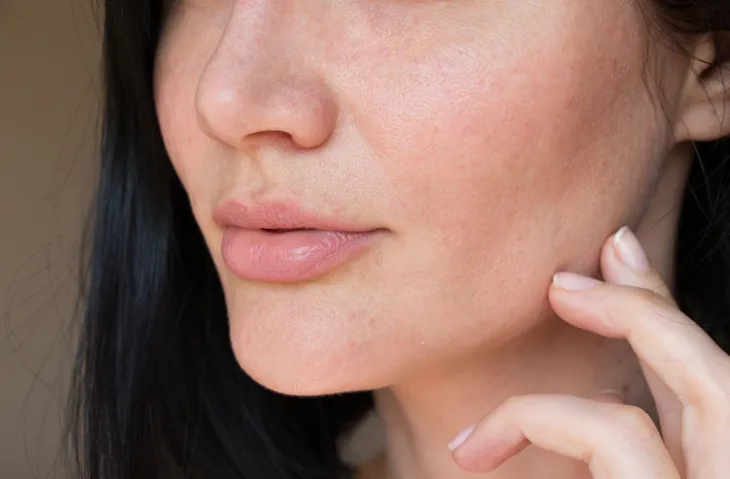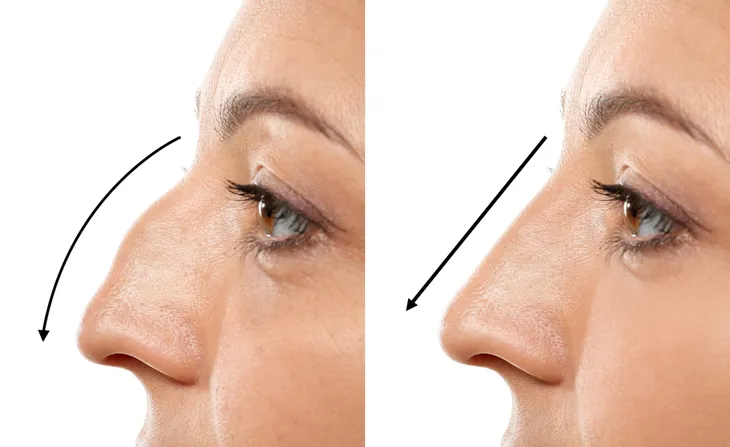Do you want to make changes to the appearance of your nose without having to undergo cosmetic surgery? A non-surgical rhinoplasty, also known as a liquid rhinoplasty, could be the solution for you! While traditional rhinoplasties take a surgical approach to adjust the nose’s structure, a non-surgical rhinoplasty uses dermal filler to smooth out bumps in the nose or change its shape.
If you’re interested to learn more about a non-surgical rhinoplasty, follow along as we break down everything you need to know including the pros and cons, and most importantly if this procedure actually works.
What Is A Non-Surgical Rhinoplasty?
A non-surgical rhinoplasty has many nicknames including a “liquid nose job” or “15-minute nose job.” According to Healthline, the procedure uses dermal filler, such as hyaluronic acid, to alter a patient’s nose temporarily. This procedure can address concerns such as shape, bumps, or angles that that patient is hoping to alter.
In comparison to traditional surgical rhinoplasty, a non-surgical rhinoplasty requires little to no recovery time and is much less expensive. A trained provider can complete the procedure in approximately 15 minutes, but the results are temporary and regular appointments would be required to maintain results.
How Does a Non-Surgical Rhinoplasty Work?
Non-surgical rhinoplasty uses an injectible filler to change the shape of the patient’s nose. The dermal filler, typically hyaluronic acid or Botox, is injected underneath the skin where the patient wishes to smooth bumps, add volume, fix a droopy tip or alter the shape.
The filler then settles into where it is injected and holds its shape to alter the appearance of the nose. This procedure can change the shape of a patient’s nose for anywhere from 6 to 12-months depending on the patient’s skin type, desired results, and the type of injection used.
Ideal Candidate for Non-Surgical Rhinoplasties
The ideal candidate for a non-surgical rhinoplasty will have minor cosmetic deformities on the nose. They should also be a candidate who is unable or unwilling to undergo a surgical rhinoplasty, according to Aedit.com.
Candidates who should avoid a non-surgical rhinoplasty are those that are looking for functional improvements of their nose such as breathing capabilities. A non-surgical rhinoplasty also cannot decrease the overall size of your nose, so candidates who are hoping for a smaller nose may achieve better results with the surgical approach.
Pro: Minimally Invasive
A major pro of a non-surgical rhinoplasty is that the procedure is minimally invasive and won’t require patients to undergo surgery. The whole procedure is typically complete within 15-minutes and most patients are able to resume normal activity shortly after treatment.
Despite being minimally invasive, patients will also notice results immediately following treatment which is a major pro. The full results of a traditional rhinoplasty can take months, or sometimes even up to a year, to fully develop.
Con: Temporary Results
While instant results are a major pro, patients should also keep in mind that these results will be temporary, which is a con of the procedure. The results typically hold for 6-months but can last longer depending on how much and what type of filler is injected.
If the patient is looking for more long-term results, they may want to consider the surgical route to ensure they achieve the desired effect of the procedure.
Pro: Low Cost
Another major pro to a non-surgical rhinoplasty is that the cost is significantly lower than the surgical approach. The cost will vary depending on the type of filler, the provider, and the number of injections necessary.
Patients can expect to pay around $600 to $1,500 for a non-surgical rhinoplasty, according to estimates from the American Society of Plastic Surgeons. In comparison, the American Society of Plastic Surgeons has stated that the average cost of a surgical rhinoplasty is $5,409.
Con: Cannot Fix Breathing Problems
If breathing problems are the main concern of the patient, a non-surgical rhinoplasty likely won’t help them achieve their desired outcome. A non-surgical rhinoplasty purely alters the appearance of the nose but will not help with functional needs.
If the patient is struggling with a deviated septum or issues related to breathing, it is likely worth looking into a surgical rhinoplasty.
Pro: Quick Recovery Time
If you’re someone who has a busy lifestyle and can’t take an extended amount of time off work to accommodate the recovery time of surgical rhinoplasty, the non-surgical route could be the right route for you. Non-surgical rhinoplasty has minimal recovery time and patients can typically resume normal activity immediately following surgery.
In comparison, it’s recommended for patients to take at least 1 week off work to rest following a surgical rhinoplasty. They should also avoid strenuous activities, such as jogging, weight lifting, or aerobic exercise, for at least 2 to 3 weeks following the surgery.
Con: Results Are Limited
If you’re looking to decrease the overall size of your nose, a non-surgical rhinoplasty might not be the right option for you. Non-surgical rhinoplasty is great to smooth unwanted bumps or lift a droopy tip, but it cannot change the overall size of the patient’s nose.
One point to keep in mind, however, is that a skilled professional will be able to inject the filler strategically to give the nose an appearance that it is smaller. This can be achieved by improving the nasal contour to give the look of a more shapely, straight nose.
Side Effects
Side effects are typically quite rare with a non-surgical rhinoplasty but it’s important to be aware of all outcomes going into any procedure. Side effects from a liquid rhinoplasty can include bruising, swelling, pain, or nausea.
A few less common side effects include asymmetry if the filler doesn’t set correctly or the formation of nodules. Another possible side effect is the migration of filler, meaning the injectable migrates to other areas of your nose or under the eye. This typically does not occur if you are working with a trained and skilled professional.
How To Prepare For Treatment
Your provider will give you guidance on how exactly to prepare for a liquid rhinoplasty, however, there are a few general tips to keep in mind leading up to the procedure. A few suggestions to keep in mind include:
- Avoid alcohol 1-day prior to treatment
- Avoid aspirin, anti-inflammatory medication, vitamin E supplements, and any other blood-thinning supplements for 1-week before the procedure
- Be aware of your vitamin K levels to reduce the risk of bruising. Foods such as green, leafy vegetables will boost your vitamin K and reduce the risk of bruising in the weeks leading up to the procedure.
- Ensure to drink water and eat a meal before the appointment
What To Expect After Treatment
Patients will notice results immediately following treatment. The results typically last anywhere from 6 to 12-months, but may be a little less or more depending on how much and what type of filler is injected. Maintenance appointments are recommended approximately every 6-months.
Following treatment, patients should try to avoid movement or massage of the area for up to 7-days, but can typically resume normal activity immediately.


